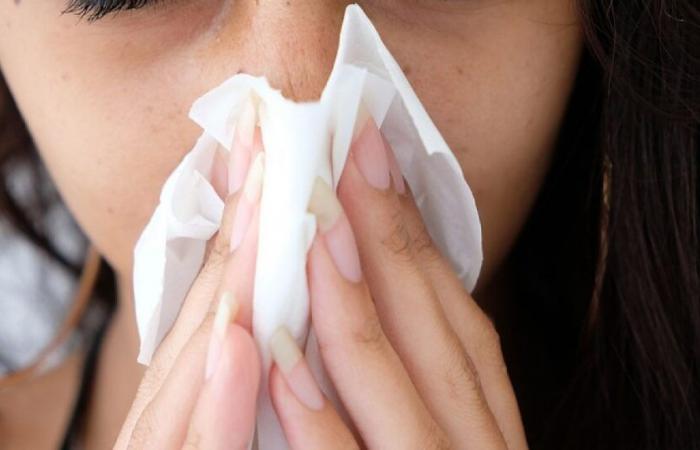This Friday, October 18, 2024, Public Health France published the regional epidemiological update for week 41 (from October 7 to 13, 2024). The flu epidemic still ongoing. Whooping cough continues to circulate with a limited health impact, mainly affecting infants and young children. And 9 indigenous cases of chikungunya confirmed in the west, including two recently detected suspected cases, are currently under investigation and have been the subject of reactive vector control measures. We publish below the press release from Public Health France (Photo: rb/www.imazpress.com)
– Chikungunya –
Since August 23, 2024, 9 confirmed cases of indigenous chikungunya have been reported in western Reunion. These are 9 positive PCRs confirmed by the associated CNR Arboviroses-CHU La Réunion.
Among these cases, 7 are grouped into an outbreak in Saint Gilles les Bains. Two other cases were identified in the same neighborhood at Ermitage, without having any link with the Saint-Gilles outbreak. The last case has a start date of signs in S39 (from 23 to 29/09).
During this week, 2 suspected cases were reported to ARS La Réunion. Preventive vector control measures have been put in place. They are currently undergoing biological confirmation and epidemiological investigation (in particular possible links with known cases or sources of transmission).
The current period, the end of the southern winter, is characterized by a still limited vector density, but the arrival of conditions more favorable to vector activity encourages all stakeholders to be extremely vigilant.
In this context, medical personnel are invited to prescribe a biological analysis allowing the confirmation or denial of the diagnosis in any patient who presents with a flu-like syndrome with joint pain.
Find all the useful information on epidemiology, clinical, biology, confirmation and reporting of cases in Le Point Sur le chikungunya.
– Whooping cough –
Since the start of the year, a whooping cough epidemic has been observed in France. In mid-October, the declines initiated and observed with September data appear to continue.
In Reunion, since the start of the year, 38 reports of isolated cases or grouped cases of whooping cough to the ARS La Réunion by health professionals (including 5 reports in S41).
Between January 1 and October 13, 2024, 11 visits for suspected whooping cough were identified in the island’s emergency services. The number of monthly cases remained low. A maximum of 3 passages were recorded in June and August respectively. Since then, 2 passages have been recorded in September and 1 in October. These passages mainly concerned children under 1 year old (n=6/11).
Although increasing compared to previous years, the current traffic level remained at this stage comparable to levels already observed in Reunion (2014 and 2015).
In terms of severity, 5 infants were admitted to pediatric intensive care. No deaths have been reported (data as of 10/10/2024).
According to city medical biology laboratory data, 66 cases were confirmed by positive PCR in Bordella Pertussis, with a maximum of 24 cases in August (out of 206 PCR requests) (Figure 2). Since then, the number of monthly confirmed cases has been decreasing with 11 cases (out of 114) in September and to date, 2 cases (out of 38) for the month of October. More than 4 out of 10 cases concerned infants under 1 year old (8.3%) or young children (12.2% from 1 to 5 years old and 20.0% from 6 to 10 years old).
Although decreasing and with a moderate health impact at this stage, the circulation of the bacteria continues in the territory.
Public Health France recalls the importance of vaccination in pregnant women, recommended since April 2022, to protect newborns and young infants. It should also be remembered for people at high risk of severe form and their close contacts (at home but also outside the workplace such as in the workplace): updating the vaccination against whooping cough according to the vaccination schedule; diagnosis and early treatment of cases; for any symptomatic person, strict compliance with hygiene measures applying to acute respiratory infections, antibiotic prophylaxis of contacts of an index case.
Acute respiratory infection and influenza viruses
Visits to the emergency room due to influenza-like illness, despite a drop, remained at a high level in W41. In S41, emergencies recorded 57 visits for this reason versus 62 in S40. The number of hospitalizations increased with 9 hospitalizations in W41 versus 5 the previous week. A little more than 60% of the passages concerned the under 15 age group.
The share of emergency activity for influenza-like illness remained stable and represented 1.4% of total activity versus 1.5% the previous week.
In community medicine, Acute Respiratory Infections (ARI) decreased with a 4.4% share of activity versus 5.1% in W40. The share of activity for IRA was at the level of the 2013-2023 average.
Virological surveillance in S41 still identified active circulation of influenza viruses with almost exclusively A(H1N1)pdm09 type viruses. The positivity rate remained stable with 11% of tests positive for influenza viruses in W41 versus 10% in W40.
Bronchiolitis (in children under 2 years old)
Visits to the emergency room for bronchiolitis in children under 2 years old decreased in W41 compared to the previous week. In W41, 33 children aged under 2 years consulted the emergency room for bronchiolitis compared to 43 in W40. New hospitalizations were decreasing (n=11) compared to the previous week (n=20).
The share of visits to the emergency room for bronchiolitis among all visits of children under 2 years old decreased with 8.9% of activity in W41 compared to 10.9% for W40.
Concerning virological surveillance, 2 positive results for RSV-A and 1 for RSV-B were identified in W41.
– Acute gastroenteritis (GEA) –
In W41, visits to emergency departments of all ages for reasons of gastroenteritis remained stable. The number of passages was 108 in S41 versus 105 in S40. The number of hospitalizations, however, increased with 21 hospitalizations in W41 compared to 14 in W40.
In children under 5 years old, visits to the emergency room for gastroenteritis were also stable.
Approximately 60 passages for reasons of gastroenteritis were recorded in S41 versus 61 passages in S40.
Hospitalizations after a visit to the emergency room were also stable with 14 hospitalizations in W41 versus 11 in W40.
In W41, the share of emergency activity among those under 5 years old for gastroenteritis remained stable compared to the previous week (9.7% in W41 vs 9.3% in W40).
In community medicine, the share of activity for acute diarrhea increased to 2.8% in W41 versus 2.2% in W40. It remained below the level of the average for the years 2013-2023.
– Covid-19 –
In W41, emergency room consultations for COVDI-19 reasons stabilized at a very low level. In W41, only 3 patients consulted the emergency room for reasons of COVID-19 versus 5 patients the previous week. Hospitalizations decreased with 1 new hospitalization for COVID-19 in W41 versus 3 in W40.
Virological surveillance implemented with virology data from the CHU microbiology laboratory
(CNR Arbovirus Associated, CNR Virus respiratory Associated, Réunion) showed an increasing positivity rate (TP) for COVID-19 in W41 compared to W40. There were 15 positive tests among 185 tests in S41, i.e. a TP of 8.1% vs. 8 positive tests among 191 tests in S40, i.e. a TP of 4.2%.
– Mortality from all causes –
In S39, the number of deaths observed for all ages and all causes was 112 people. Compared to the previous week, the number of deaths observed was down (n=129 in W38). The number of deaths observed in W39 was equal to the expected number of deaths (n=112).
Among those over 65, the number of deaths observed in W39 (n=80) was lower than the expected number of deaths (n=85).
This figure was a decrease compared to what was observed in S38 (101 deaths observed).
News from Reunion, Public Health France, Epidemiological update






